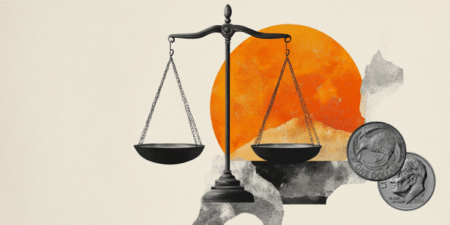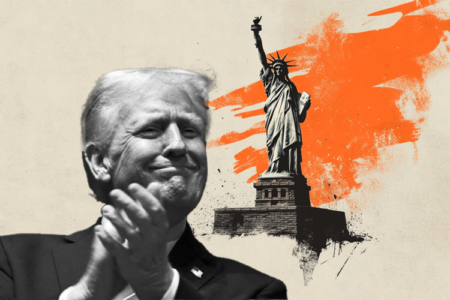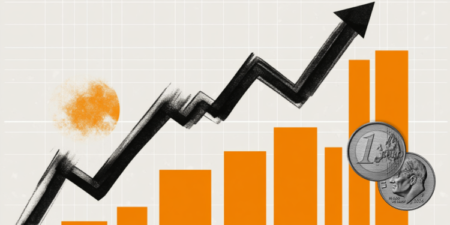Here is what you need to know on Wednesday, April 16:
Following a meager recovery on Tuesday, the US Dollar (USD) comes under renewed selling pressure on Wednesday as markets assess the latest news on trade wars. March Retail Sales and Industrial Production data will be featured in the US economic calendar. Additionally, the Bank of Canada (BoC) will announce monetary policy decisions. Finally, Federal Reserve Chairman Jerome Powell will be delivering a speech in the late American session.
US Dollar PRICE Today
The table below shows the percentage change of US Dollar (USD) against listed major currencies today. US Dollar was the weakest against the Swiss Franc.
| USD | EUR | GBP | JPY | CAD | AUD | NZD | CHF | |
|---|---|---|---|---|---|---|---|---|
| USD | -0.90% | -0.36% | -0.70% | -0.25% | -0.31% | -0.34% | -1.22% | |
| EUR | 0.90% | 0.57% | 0.21% | 0.64% | 0.83% | 0.59% | -0.32% | |
| GBP | 0.36% | -0.57% | -0.38% | 0.09% | 0.27% | 0.02% | -0.84% | |
| JPY | 0.70% | -0.21% | 0.38% | 0.46% | 0.71% | 0.43% | -0.55% | |
| CAD | 0.25% | -0.64% | -0.09% | -0.46% | 0.22% | -0.05% | -0.91% | |
| AUD | 0.31% | -0.83% | -0.27% | -0.71% | -0.22% | -0.27% | -1.10% | |
| NZD | 0.34% | -0.59% | -0.02% | -0.43% | 0.05% | 0.27% | -0.85% | |
| CHF | 1.22% | 0.32% | 0.84% | 0.55% | 0.91% | 1.10% | 0.85% |
The heat map shows percentage changes of major currencies against each other. The base currency is picked from the left column, while the quote currency is picked from the top row. For example, if you pick the US Dollar from the left column and move along the horizontal line to the Japanese Yen, the percentage change displayed in the box will represent USD (base)/JPY (quote).
Bloomberg reported late Tuesday that US President Donald Trump launched a probe into the need for tariffs on critical minerals, the latest move in an escalating trade war that has targeted key sectors of the global economy. In the meantime, citing individuals familiar with the discussions, the Wall Street Journal said the Trump administration plans to use ongoing tariff negotiations to pressure US trading partners to limit their dealings with China. Markets seem to have adopted a cautious stance following these developments. At the time of press, US stock index futures were down between 0.6% and 2%, while the USD Index was losing more than 0.5% on the day at 99.55.
The UK’s Office for National Statistics reported early Wednesday that annual inflation, as measured by the change in the Consumer Price Index (CPI), edged lower to 2.6% in March from 2.8% in February. In the same period, the core CPI was up 3.4%, as expected. GBP/USD largely ignored these numbers and was last seen trading at its highest level since October above 1.3250.
USD/CAD gained traction and rose about 0.6% on Tuesday after Statistics Canada reported that the CPI rose by 2.3% on a yearly basis in March, compared to the market expectation of 2.6%. Later in the day, the BoC is expected to hold its policy rate unchanged at 2.75%. Ahead of the BoC event, USD/CAD trades in negative territory slightly below 1.3950.
After falling more than 0.5% on Tuesday, EUR/USD reversed its direction during the Asian trading hours on Wednesday and rose above 1.1350. Eurostat will release final revisions to March inflation data and the European Central Bank will announce policy decisions on Thursday.
Bank of Japan (BoJ) Governor Kazuo Ueda said early Wednesday that the central bank may need to take policy action if US tariffs hurt the economy. USD/JPY declines sharply midweek and trades near the multi-month low it touched at 142.05 in the previous week.
The data from China showed earlier in the day that the Gross Domestic Product expanded at an annual rate of 5.4% in the first quarter. This reading matched the expansion rate of the previous quarter and came in above the market expectation of 5.1%. After closing the fifth consecutive day in the green, AUD/USD stays in a consolidation phase at around 0.6350 on Wednesday. In the Asian session on Thursday, employment data from Australia will be watched closely by market participants.
Following the sideways action seen on Monday and Tuesday, Gold benefited from the risk-averse market atmosphere in the Asian session on Wednesday. At the time of press, XAU/USD was trading at a new all-time high slightly below $3,300.
US-China Trade War FAQs
Generally speaking, a trade war is an economic conflict between two or more countries due to extreme protectionism on one end. It implies the creation of trade barriers, such as tariffs, which result in counter-barriers, escalating import costs, and hence the cost of living.
An economic conflict between the United States (US) and China began early in 2018, when President Donald Trump set trade barriers on China, claiming unfair commercial practices and intellectual property theft from the Asian giant. China took retaliatory action, imposing tariffs on multiple US goods, such as automobiles and soybeans. Tensions escalated until the two countries signed the US-China Phase One trade deal in January 2020. The agreement required structural reforms and other changes to China’s economic and trade regime and pretended to restore stability and trust between the two nations. However, the Coronavirus pandemic took the focus out of the conflict. Yet, it is worth mentioning that President Joe Biden, who took office after Trump, kept tariffs in place and even added some additional levies.
The return of Donald Trump to the White House as the 47th US President has sparked a fresh wave of tensions between the two countries. During the 2024 election campaign, Trump pledged to impose 60% tariffs on China once he returned to office, which he did on January 20, 2025. With Trump back, the US-China trade war is meant to resume where it was left, with tit-for-tat policies affecting the global economic landscape amid disruptions in global supply chains, resulting in a reduction in spending, particularly investment, and directly feeding into the Consumer Price Index inflation.
Read the full article here
















